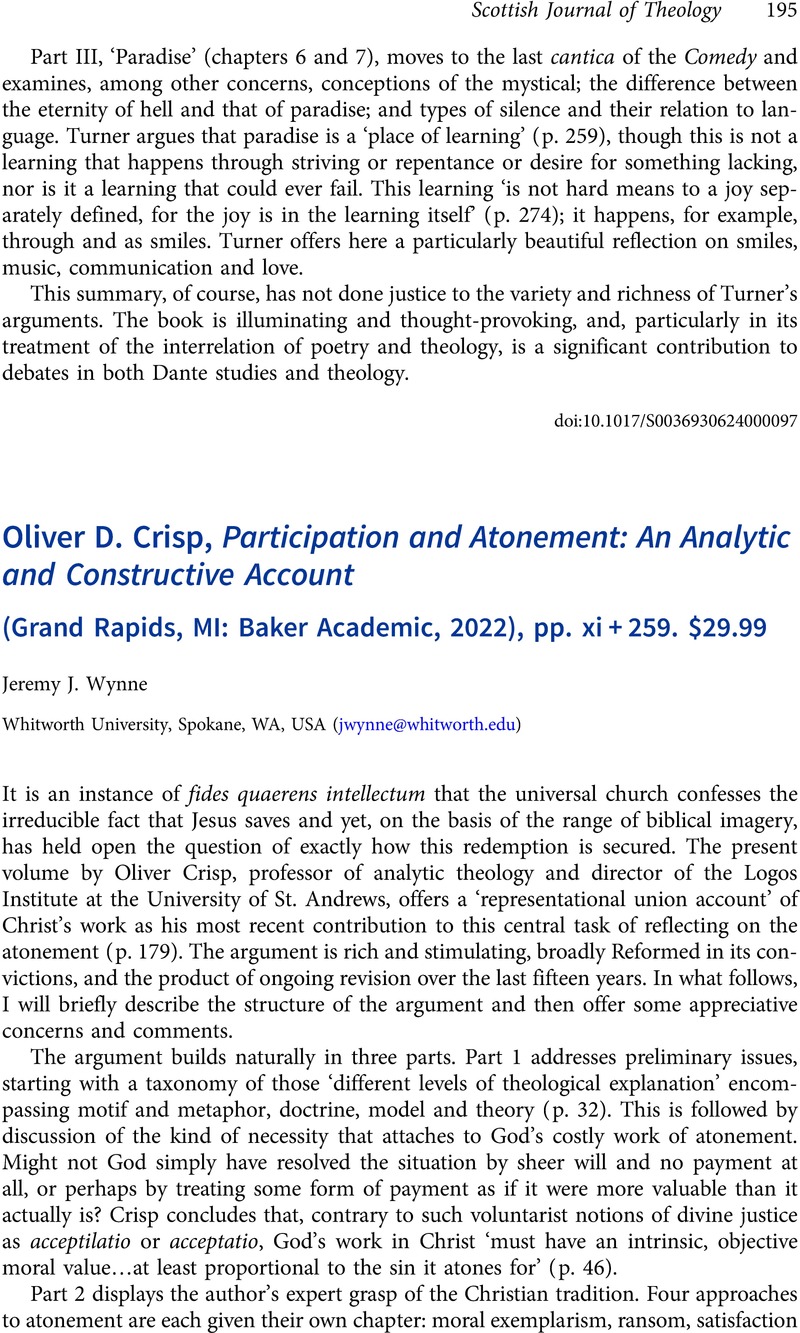No CrossRef data available.
Article contents
Oliver D. Crisp, Participation and Atonement: An Analytic and Constructive Account (Grand Rapids, MI: Baker Academic, 2022), pp. xi + 259. $29.99
Review products
Oliver D. Crisp, Participation and Atonement: An Analytic and Constructive Account (Grand Rapids, MI: Baker Academic, 2022), pp. xi + 259. $29.99
Published online by Cambridge University Press: 06 March 2024
Abstract
An abstract is not available for this content so a preview has been provided. Please use the Get access link above for information on how to access this content.

Information
- Type
- Book Review
- Information
- Copyright
- Copyright © The Author(s), 2024. Published by Cambridge University Press


